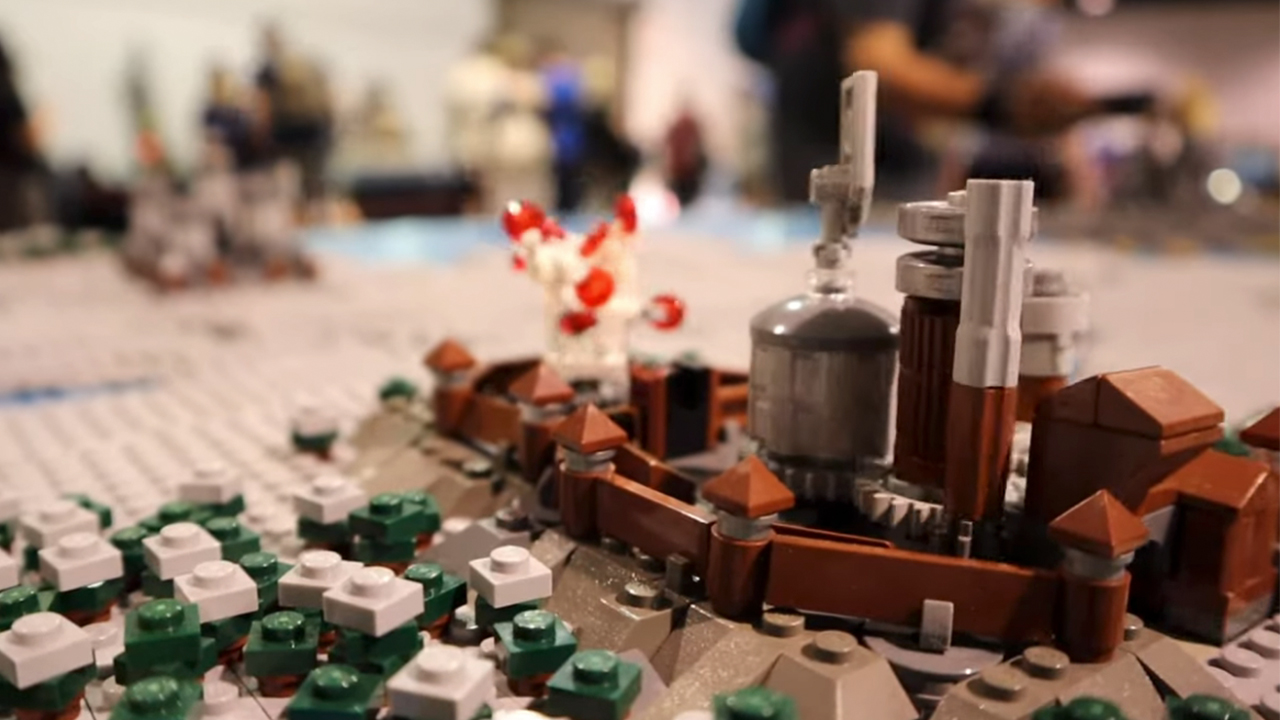Two guys are sitting at a bar. One guy is recounting a story about this nice, but irritating family friend he has just run into for the umpteenth time. “Well, if she’s nice, what’s the problem?” his buddy asks. “She brought my kids a basket of toys, coloring books, blocks -- the works, ya know -- and then this copy of James and the Giant Peach. So, anyway, now I run into her all the time and she always asks how the kids are doing and how they’re liking that goddamn film.” “Right,” says his buddy, “and then you have to lie and say they love it, blah blah blah." "No,” he says, “You don’t get it. My kids love that film. And now, instead of Snow White’s ripe melons, I’ve gotta groan at this peach two hours a day.” I remember James and the Giant Peach. Not because of its 1996 film release, but because I loved the Roald Dahl book as a kid. When the opportunity to review the film’s re-release came up, I immediately jumped on board -- not because of nostalgia, but because most of the film was made with stop-motion animation, and I wanted to check it out on Blu-ray. General Consensus: turns out the animation’s fairly cool. The rest of the film, however, is another monster.
James and the Giant Peach is the story of an unhappy boy named James (Paul Terry) who lives with his horrid aunts (Joanna Lumley and Miriam Margolyes) in a Tim Burton house on a Tim Burton hill (turns out Tim Burton produced this film). One day, James meets a magic man who gives him a sack of magic green "crocodile tongues." After James accidentally spills them, the critters produce a giant peach, replete with giant bugs (who used to be regular-sized members of the community on the hill but grew along with the peach). James and his newfound companions escape to New York using the peach, some seagulls, and vaguely witty use of spider-web silk.
Wait, a moment. We need to back up so that I can explain that James lives in Britain. Thus, escaping to New York means crossing the Atlantic Ocean. I don’t bring this up to ridicule the ridiculousness of this premise; James and the Giant Peach, is based in the fanciful and fantastical. I do bring this up because location is very important. Knowledge of location brings us to the first weirdly large problem with the film. You see, the centipede talks as if he’s from Brooklyn, the grasshopper (Simon Callow) is from some absurd aristocracy, the ladybug is randomly British, and Miss Spider (Susan Sarandon) is from France, though she sounds like a character from SNL who can’t really do the voice, but its 10 minutes till show time and the sketch is already written, so it’ll have to do.
Now, I can accept a movie where seagulls carry a giant peach across miles and miles of water to take a boy to the Empire State building for no discernible reason except that his father pointed it out in a cloud once. I can accept that James’ parents were killed in a rhinoceros attack. It’s a stretch, but I will accept that a Skellington, best known for its role in The Nightmare Before Christmas, appears as an oceanic pirate. Seriously, though, I’m supposed to deal with characters that traverse from all parts of the globe to settle in a virtual wasteland and just hang out with each other? This is not fanciful; this is absurd. They might as well have brought a scarab back from the dead and given it an Egyptian brogue.
James and the Giant Peach asks us again and again to accept things that are impossibly frustrating without giving us anything in return. It asks us to believe in terrible acting and gives us a few witticisms to help us plod through (I only say few, because there is an awesome back joke with the earthworm). It forces us through tiresome musical numbers. It asks us to believe the unbelievable with no backstory whatsoever. It becomes, then, like watching a superhero movie where the reason for the superheroes’ powers is never explained. James and the Giant Peach is nothing if not pretty pictures used for entertainment that is completely mindless. And we all know -- or should know, because Pixar’s made it clear in the last decade -- that children’s movies can be so much more than that.
Specific consensus? Avoid at all costs, unless a) you are a slave to stop-motion animation, or b) you have the weird affection for Roald Dahl. If you remember the book fondly, the animation is enough to insert more vivid imagery into your brain. But even then, this film may be better if watched on mute. There’s a featurette explaining how to produce stop-motion animation -- we know, we know, position the puppet, make a frame, move its positioning, take another framed shot, 24 frames equals one second of film, which is awesome. There’s also a hard-to-wield-the-remote game where you can hit the aunts in the bum with a rhinoceros. You read that right. There is an awesome Genuine Disney DVD & Blu-ray commercial, but I shan’t spoil it.
Addendum to my original review: the special features include the original film trailer, which shows the quality of the original film when compared to the remastered Blu-ray edition. The remastered version is vastly altered and looks a thousand times better. So, especially if you like the film enough to already own a copy, this version may be worth the purchase price.
Your Daily Blend of Entertainment News

